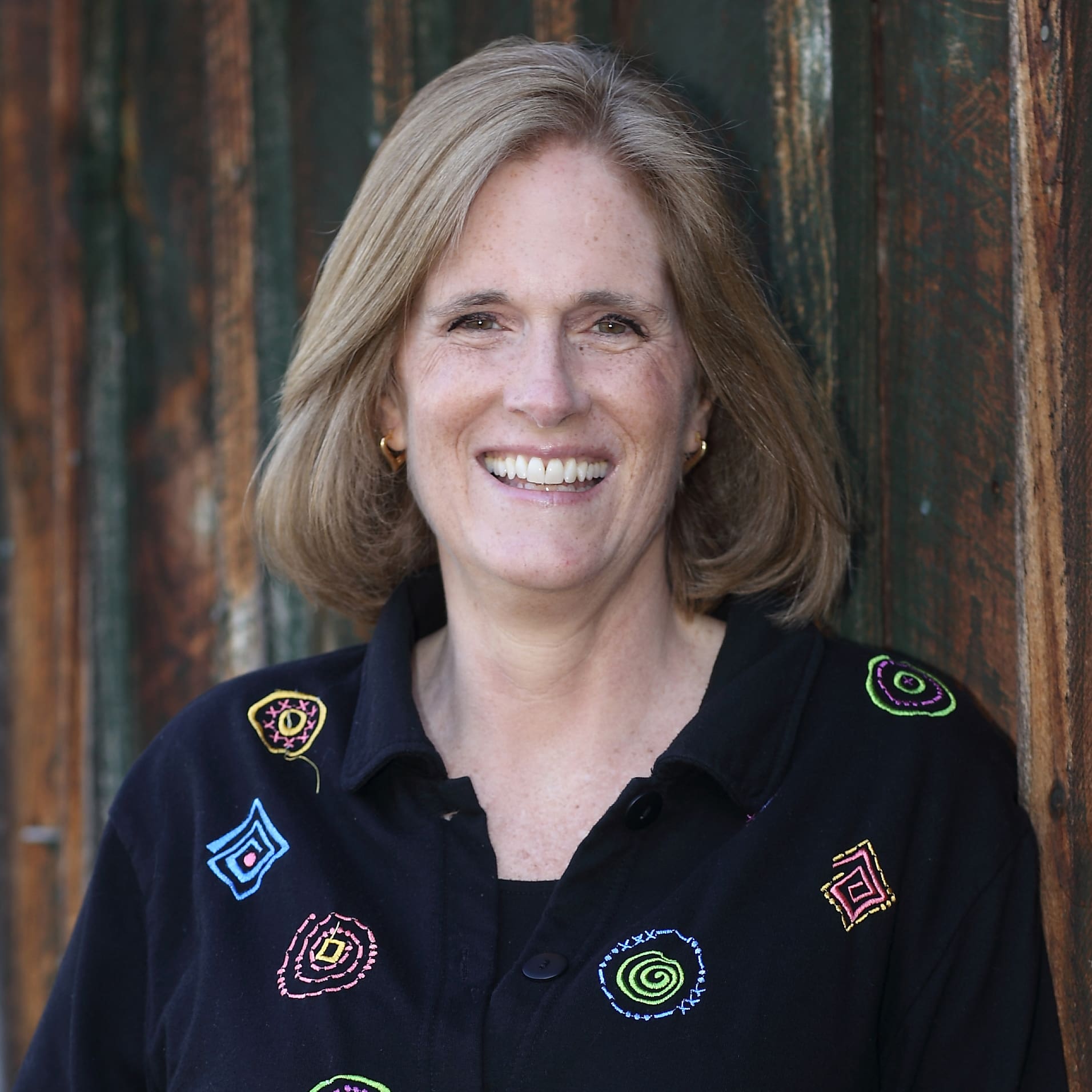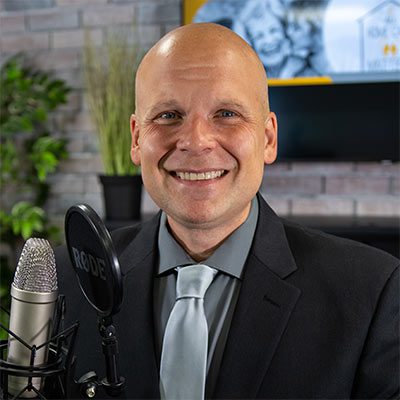Consulting: Changed and Changing
In the beginning
n
I started as a consultant in 1980. I retired from consulting in 2018, a lifer in the industry. To say the consulting industry changed a lot during my career is quite an understatement
n
Consulting always involves change- new customer needs, new strategy, new operating processes, new Technology, Innovation, improvement and yadda-yadda. Consultants sell change, but letu2019s observe the astonishing change to the consulting industry itself.
n
Computers changed everything
n
Consultants traded information long before the u201cInformation Age.u201d In the 1880s Arthur D. Little sold his catalyst research and Frederick Winslow Taylor built a practice on time and motion optimization-the u201cone best way.u201d Consultants sold proprietary knowledge and problem-solving processes.
n
Storing Information
n
Consultants became information hoarders. Industry information demonstrated credibility; earlier project findings shortened analysis time. Consulting firms still save data, but theyu2019ve moved from huge floorspace libraries, monitored by librarians who updated Dewey-decimal-system-like card catalogues to Lotus Notes and SyQuest disks to their own server farms (the Cloud) to store information available to consultantsu2019 laptops, tablets, and smartphones.
n
Presentations
n
In my career, presentations progressed from acetate slides, made with press-on Letraset letters and hand-drawn graphs through flipcharts to PowerPoint slides. I know consultants who call PowerPoint slides u201cpanelsu201d from the days when presentations were leather bound into a flip-book of thick posterboard u201cpanels.u201d
n
PowerPoint shortened presentation prep time. You could literally make a change seconds before presenting.u00a0 Iu2019m not sure that added to quality, but it did satisfy the partneru2019s need to wordsmith.
n
Now, presentations include video links and onscreen voting and analysis, and, and, and. . . too often demonstrating the Murphyu2019s Law effect connected to live demos.
n
Analysis
n
My first project analyses were done on adding machines and Texas Instruments handu00a0 calculators (TI-42). I used graphical analysis a lot, plotting two sets of data on a matrix to hint at a relationship. Early on you could get time on the mainframe to do regression, but youu2019d better have more than a hunch because such time was hard to get.u00a0 I experimented with VisiCalc, one of the first spreadsheet programs to do a database task without success. Now middle school kids are better on Excel than I am, and statistical analysis programs process huge files of so-called u201cBig Data.u201d
n
Changes to the Consulting Project Work
n
Consulting is a boom and bust business. Times look good, consultants create a new strategy; times look not-so-good consultants improve processes and cut costs. The names of the frameworks change. Strategy progressed from the Growth-Share Matrix to Five Forces of Industry Competitiveness to Blue Ocean; Improvement morphed from Quality Circles to Total Productive Maintenance to Reengineering, to Lean Six Sigma to Agile. The desired outcomes, growth or profit, are the same no matter what you call the solution.
n
During this forty years, there have been some other drivers of consulting work:
n
- n
- The bottom line: The growing emphasis on shareholder value, promoted by monetarist economist Milton Friedman, raised CEO pay, and created u201crock-star CEOs,u201d who move from company to company, hiring large consulting firms to help them change the company.
- One World: Business globalized creating opportunities for global organization design and off-shoring of manufacturing, data centers, and customer service operations. Now the backlash, localization and tribalism, is creating some consulting firms opportunities to reverse the process.
- Tech Bros Rule: The emergence of computer technologies created huge growth in the tech industry, behemoth companies, and an explosion in consulting service offerings like, data mining, and digital transformation. The democratization of information has also made it easier to start a small consulting firm or go independent. There are now available third party services for analytic frameworks and industry knowledge.
- Buy Donu2019t Build: The diminishing pressure on anti-trust enforcement accelerated merger and acquisition activity with the accompanying consulting service offerings, due diligence, and post-merger integration.
- The Pill: The explosive growth of the biotech and pharmaceutical-driven US healthcare, a market without competitive price controls, created a sales process bonanza for some consulting firms.
- u201cMoney, Itu2019s a Gasu201d: Banking and financial services moved from stodgy backwater to fee-driven financial engineering private equity operations that allowed some consultants to share in the gains of ownership.
- u201cDrill Baby Drill:u201d All of this growth has needed energy, so consultants who have worked in oil and gas have prospered. They same consultants may have opportunity in renewable energy in the future.
n
n
n
n
n
n
n
n
The work of some consulting firms to these drivers may have contributed to negative effects on society, e.g., financial collapse, addiction epidemics, and environmental damage.
n
The Growing Importance of u201cPeople Stuffu201d
n
Maybe it should be obvious, but nothing changes unless people do. A strategy is just a plan, a new technology is just a gadget until someone does something different. I evolved into working on the people side of change, quicker than some, slower than I should have. The consulting industry has caught up now.
n
The people changes of this period are enormous. There are many more women in the workforce. My generation, post-war Baby Boomers are retiring looking for second acts. Generations that followu00a0 (X, Millennials, Z) are smaller and more diverse and have some different ideas about work.
n
Consulting firms have started to adopt the practices of organizational development consultants. Many have acquired smaller firms to help them become more people focused.
n
How Will Consulting Change in the Future?
n
I donu2019t know. I imagine that:
n
- n
- The digitization of the industry will continue. I think that automated, machine learning systems, what we call Artificial Intelligence (AI), will take over certain parts of the consulting process. CRM software might integrate with problems and solutions databases to suggest potential projects. I can easily imaging Big Data mining systems being set up in companies to change strategies autonomously, (not that I think that is necessarily a good thing). No doubt presentations will get more high-tech. (Again u2013 a good thing? Hmmm.)
- The people-centricity of consulting will continue to grow. Technology may replace some peopleu2019s jobs and that will change the workforce contract. Can consultants help to redeploy and train people or will they resort to u201crightsizing and POP (people off payroll)? There is a backlash against diversity programs at the moment, but will consultants give in to that or help clients gain the commitment and contribution of everyone?
- Big consulting firms will get bigger; small firms and independent will proliferate. The larger firms will acquire the middle tier, but the availability of frameworks, industry knowledge, and analytical software will make it easier to be on your own. Communications software will create opportunities for form network of independents.
- People centricity will come to consulting firms themselves? For large parts of my career, I flew out to a client site Sunday afternoon and flew home Friday night. Zoom meetings, and four day work weeks, more client involvement can make the job less onerous.
- Consulting firms will work on solving the unintended consequences of the last forty years. We need a balanced portfolio of energy production, sustainable (reuseable) manufacturing, local food and shelter production, and a way for people to speed learn and adapt to mind-shaking change. Consultants can take the lead on these issues.
n
n
n
n
n
n
OK, I admit Iu2019m feeling optimistic today. Iu2019ve also been out of consulting for the last six years, so I may not know about the impact of the global pandemic, international conflict, the changing attitudes toward work, or even the infiltration of new technologies in the industry.
n
What about you? How do you see consulting changing in the future?
n
n
n
 Traveling the Consulting Road: Career Wisdom for New Consultants, Candidates, and Their Mentorsu00a0is now available in many places:
Traveling the Consulting Road: Career Wisdom for New Consultants, Candidates, and Their Mentorsu00a0is now available in many places:
n
If youu2019d like an eBook It is available from your choice of eBook retailers here. If you are a print reader you can purchase it from Amazon and Barnes & Noble here or
n
Direct from the publisher: Paperback here and Hardcover here. (US only for the moment).
n
If you are old school,u00a0 or live outside of the United States, Canada, Europe and the United Kingdom or Australia, and like print books, you can order it through your local bookstore, through Ingram Sparku2019s global distribution network.
“,”tablet”:”
In the beginning
n
I started as a consultant in 1980. I retired from consulting in 2018, a lifer in the industry. To say the consulting industry changed a lot during my career is quite an understatement
n
Consulting always involves change- new customer needs, new strategy, new operating processes, new technology, innovation, improvement and yadda-yadda. Consultants sell change, but letu2019s observe the astonishing change to the consulting industry itself.
n
Computers changed everything
n
Consultants traded information long before the u201cInformation Age.u201d In the 1880s Arthur D. Little sold his catalyst research and Frederick Winslow Taylor built a practice on time and motion optimization-the u201cone best way.u201d Consultants sold proprietary knowledge and problem-solving processes.
n
Storing Information
n
Consultants became information hoarders. Industry information demonstrated credibility; earlier project findings shortened analysis time. Consulting firms still save data, but theyu2019ve moved from huge floorspace libraries, monitored by librarians who updated Dewey-decimal-system-like card catalogues to Lotus Notes and SyQuest disks to their own server farms (the Cloud) to store information available to consultantsu2019 laptops, tablets, and smartphones.
n
Presentations
n
In my career, presentations progressed from acetate slides, made with press-on Letraset letters and hand-drawn graphs through flipcharts to PowerPoint slides. I know consultants who call PowerPoint slides u201cpanelsu201d from the days when presentations were leather bound into a flip-book of thick posterboard u201cpanels.u201d
n
PowerPoint shortened presentation prep time. You could literally make a change seconds before presenting. Iu2019m not sure that added to quality, but it did satisfy the partneru2019s need to wordsmith.
n
Now, presentations include video links and onscreen voting and analysis, and, and, and. . . too often demonstrating the Murphyu2019s Law effect connected to live demos.
n
Analysis
n
My first project analyses were done on adding machines and Texas Instruments hand calculators (TI-42). I used graphical analysis a lot, plotting two sets of data on a matrix to hint at a relationship. Early on you could get time on the mainframe to do regression, but youu2019d better have more than a hunch because such time was hard to get. I experimented with VisiCalc, one of the first spreadsheet programs to do a database task without success. Now middle school kids are better on Excel than I am, and statistical analysis programs process huge files of so-called u201cBig Data.u201d
n
Changes to the Consulting Project Work
n
Consulting is a boom and bust business. Times look good, consultants create a new strategy; times look not-so-good consultants improve processes and cut costs. The names of the frameworks change. Strategy progressed from the Growth-Share Matrix to Five Forces of Industry Competitiveness to Blue Ocean; Improvement morphed from Quality Circles to Total Productive Maintenance to Reengineering, to Lean Six Sigma to Agile. The desired outcomes, growth or profit, are the same no matter what you call the solution.
n
During this forty years, there have been some other drivers of consulting work:
n
- n
- The bottom line: The growing emphasis on shareholder value, promoted by monetarist economist Milton Friedman, raised CEO pay, and created u201crock-star CEOs,u201d who move from company to company, hiring large consulting firms to help them change the company.
- One World: Business globalized creating opportunities for global organization design and off-shoring of manufacturing, data centers, and customer service operations. Now the backlash, localization and tribalism, is creating some consulting firms opportunities to reverse the process.
- Tech Bros Rule: The emergence of computer technologies created huge growth in the tech industry, behemoth companies, and an explosion in consulting service offerings like, data mining, and digital transformation. The democratization of information has also made it easier to start a small consulting firm or go independent. There are now available third party services for analytic frameworks and industry knowledge.
- Buy Donu2019t Build: The diminishing pressure on anti-trust enforcement accelerated merger and acquisition activity with the accompanying consulting service offerings, due diligence, and post-merger integration.
- The Pill: The explosive growth of the biotech and pharmaceutical-driven US healthcare, a market without competitive price controls, created a sales process bonanza for some consulting firms.
- u201cMoney, Itu2019s a Gasu201d: Banking and financial services moved from stodgy backwater to fee-driven financial engineering private equity operations that allowed some consultants to share in the gains of ownership.
- u201cDrill Baby Drill:u201d All of this growth has needed energy, so consultants who have worked in oil and gas have prospered. They same consultants may have opportunity in renewable energy in the future.
n
n
n
n
n
n
n
n
The work of some consulting firms to these drivers may have contributed to negative effects on society, e.g., financial collapse, addiction epidemics, and environmental damage.
n
The Growing Importance of u201cPeople Stuffu201d
n
Maybe it should be obvious, but nothing changes unless people do. A strategy is just a plan, a new technology is just a gadget until someone does something different. I evolved into working on the people side of change, quicker than some, slower than I should have. The consulting industry has caught up now.
n
The people changes of this period are enormous. There are many more women in the workforce. My generation, post-war Baby Boomers are retiring looking for second acts. Generations that follow (X, Millennials, Z) are smaller and more diverse and have some different ideas about work.
n
Consulting firms have started to adopt the practices of organizational development consultants. Many have acquired smaller firms to help them become more people focused.
n
How Will Consulting Change in the Future?
n
I donu2019t know. I imagine that:
n
- n
- The digitization of the industry will continue. I think that automated, machine learning systems, what we call artificial intelligence (AI), will take over certain parts of the consulting process. CRM software might integrate with problems and solutions databases to suggest potential projects. I can easily imaging Big Data mining systems being set up in companies to change strategies autonomously, (not that I think that is necessarily a good thing). No doubt presentations will get more high-tech. (Again u2013 a good thing? Hmmm.)
- The people-centricity of consulting will continue to grow. Technology may replace some peopleu2019s jobs and that will change the workforce contract. Can consultants help to redeploy and train people or will they resort to u201crightsizing and POP (people off payroll)? There is a backlash against diversity programs at the moment, but will consultants give in to that or help clients gain the commitment and contribution of everyone?
- Big consulting firms will get bigger; small firms and independent will proliferate. The larger firms will acquire the middle tier, but the availability of frameworks, industry knowledge, and analytical software will make it easier to be on your own. Communications software will create opportunities for form network of independents.
- People centricity will come to consulting firms themselves? For large parts of my career, I flew out to a client site Sunday afternoon and flew home Friday night. Zoom meetings, and four day work weeks, more client involvement can make the job less onerous.
- Consulting firms will work on solving the unintended consequences of the last forty years. We need a balanced portfolio of energy production, sustainable (reuseable) manufacturing, local food and shelter production, and a way for people to speed learn and adapt to mind-shaking change. Consultants can take the lead on these issues.
n
n
n
n
n
n
OK, I admit Iu2019m feeling optimistic today. Iu2019ve also been out of consulting for the last six years, so I may not know about the impact of the global pandemic, international conflict, the changing attitudes toward work, or even the infiltration of new technologies in the industry.
n
What about you? How do you see consulting changing in the future?
n
n
n
 Traveling the Consulting Road: Career Wisdom for New Consultants, Candidates, and Their Mentors is now available in many places:
Traveling the Consulting Road: Career Wisdom for New Consultants, Candidates, and Their Mentors is now available in many places:
n
If youu2019d like an eBook It is available from your choice of eBook retailers here. If you are a print reader you can purchase it from Amazon and Barnes & Noble here or
n
Direct from the publisher: Paperback here and Hardcover here. (US only for the moment).
n
If you are old school, or live outside of the United States, Canada, Europe and the United Kingdom or Australia, and like print books, you can order it through your local bookstore, through Ingram Sparku2019s global distribution network.
“,”phone”:”
In the beginning
n
I started as a consultant in 1980. I retired from consulting in 2018, a lifer in the industry. To say the consulting industry changed a lot during my career is quite an understatement
n
Consulting always involves change- new customer needs, new strategy, new operating processes, new technology, innovation, improvement and yadda-yadda. Consultants sell change, but letu2019s observe the astonishing change to the consulting industry itself.
n
Computers changed everything
n
Consultants traded information long before the u201cInformation Age.u201d In the 1880s Arthur D. Little sold his catalyst research and Frederick Winslow Taylor built a practice on time and motion optimization-the u201cone best way.u201d Consultants sold proprietary knowledge and problem-solving processes.
n
Storing Information
n
Consultants became information hoarders. Industry information demonstrated credibility; earlier project findings shortened analysis time. Consulting firms still save data, but theyu2019ve moved from huge floorspace libraries, monitored by librarians who updated Dewey-decimal-system-like card catalogues to Lotus Notes and SyQuest disks to their own server farms (the Cloud) to store information available to consultantsu2019 laptops, tablets, and smartphones.
n
Presentations
n
In my career, presentations progressed from acetate slides, made with press-on Letraset letters and hand-drawn graphs through flipcharts to PowerPoint slides. I know consultants who call PowerPoint slides u201cpanelsu201d from the days when presentations were leather bound into a flip-book of thick posterboard u201cpanels.u201d
n
PowerPoint shortened presentation prep time. You could literally make a change seconds before presenting. Iu2019m not sure that added to quality, but it did satisfy the partneru2019s need to wordsmith.
n
Now, presentations include video links and onscreen voting and analysis, and, and, and. . . too often demonstrating the Murphyu2019s Law effect connected to live demos.
n
Analysis
n
My first project analyses were done on adding machines and Texas Instruments hand calculators (TI-42). I used graphical analysis a lot, plotting two sets of data on a matrix to hint at a relationship. Early on you could get time on the mainframe to do regression, but youu2019d better have more than a hunch because such time was hard to get. I experimented with VisiCalc, one of the first spreadsheet programs to do a database task without success. Now middle school kids are better on Excel than I am, and statistical analysis programs process huge files of so-called u201cBig Data.u201d
n
Changes to the Consulting Project Work
n
Consulting is a boom and bust business. Times look good, consultants create a new strategy; times look not-so-good consultants improve processes and cut costs. The names of the frameworks change. Strategy progressed from the Growth-Share Matrix to Five Forces of Industry Competitiveness to Blue Ocean; Improvement morphed from Quality Circles to Total Productive Maintenance to Reengineering, to Lean Six Sigma to Agile. The desired outcomes, growth or profit, are the same no matter what you call the solution.
n
During this forty years, there have been some other drivers of consulting work:
n
- n
- The bottom line: The growing emphasis on shareholder value, promoted by monetarist economist Milton Friedman, raised CEO pay, and created u201crock-star CEOs,u201d who move from company to company, hiring large consulting firms to help them change the company.
- One World: Business globalized creating opportunities for global organization design and off-shoring of manufacturing, data centers, and customer service operations. Now the backlash, localization and tribalism, is creating some consulting firms opportunities to reverse the process.
- Tech Bros Rule: The emergence of computer technologies created huge growth in the tech industry, behemoth companies, and an explosion in consulting service offerings like, data mining, and digital transformation. The democratization of information has also made it easier to start a small consulting firm or go independent. There are now available third party services for analytic frameworks and industry knowledge.
- Buy Donu2019t Build: The diminishing pressure on anti-trust enforcement accelerated merger and acquisition activity with the accompanying consulting service offerings, due diligence, and post-merger integration.
- The Pill: The explosive growth of the biotech and pharmaceutical-driven US healthcare, a market without competitive price controls, created a sales process bonanza for some consulting firms.
- u201cMoney, Itu2019s a Gasu201d: Banking and financial services moved from stodgy backwater to fee-driven financial engineering private equity operations that allowed some consultants to share in the gains of ownership.
- u201cDrill Baby Drill:u201d All of this growth has needed energy, so consultants who have worked in oil and gas have prospered. They same consultants may have opportunity in renewable energy in the future.
n
n
n
n
n
n
n
n
The work of some consulting firms to these drivers may have contributed to negative effects on society, e.g., financial collapse, addiction epidemics, and environmental damage.
n
The Growing Importance of u201cPeople Stuffu201d
n
Maybe it should be obvious, but nothing changes unless people do. A strategy is just a plan, a new technology is just a gadget until someone does something different. I evolved into working on the people side of change, quicker than some, slower than I should have. The consulting industry has caught up now.
n
The people changes of this period are enormous. There are many more women in the workforce. My generation, post-war Baby Boomers are retiring looking for second acts. Generations that follow (X, Millennials, Z) are smaller and more diverse and have some different ideas about work.
n
Consulting firms have started to adopt the practices of organizational development consultants. Many have acquired smaller firms to help them become more people focused.
n
How Will Consulting Change in the Future?
n
I donu2019t know. I imagine that:
n
- n
- The digitization of the industry will continue. I think that automated, machine learning systems, what we call artificial intelligence (AI), will take over certain parts of the consulting process. CRM software might integrate with problems and solutions databases to suggest potential projects. I can easily imaging Big Data mining systems being set up in companies to change strategies autonomously, (not that I think that is necessarily a good thing). No doubt presentations will get more high-tech. (Again u2013 a good thing? Hmmm.)
- The people-centricity of consulting will continue to grow. Technology may replace some peopleu2019s jobs and that will change the workforce contract. Can consultants help to redeploy and train people or will they resort to u201crightsizing and POP (people off payroll)? There is a backlash against diversity programs at the moment, but will consultants give in to that or help clients gain the commitment and contribution of everyone?
- Big consulting firms will get bigger; small firms and independent will proliferate. The larger firms will acquire the middle tier, but the availability of frameworks, industry knowledge, and analytical software will make it easier to be on your own. Communications software will create opportunities for form network of independents.
- People centricity will come to consulting firms themselves? For large parts of my career, I flew out to a client site Sunday afternoon and flew home Friday night. Zoom meetings, and four day work weeks, more client involvement can make the job less onerous.
- Consulting firms will work on solving the unintended consequences of the last forty years. We need a balanced portfolio of energy production, sustainable (reuseable) manufacturing, local food and shelter production, and a way for people to speed learn and adapt to mind-shaking change. Consultants can take the lead on these issues.
n
n
n
n
n
n
OK, I admit Iu2019m feeling optimistic today. Iu2019ve also been out of consulting for the last six years, so I may not know about the impact of the global pandemic, international conflict, the changing attitudes toward work, or even the infiltration of new technologies in the industry.
n
What about you? How do you see consulting changing in the future?
n
n
 Traveling the Consulting Road: Career Wisdom for New Consultants, Candidates, and Their Mentors is now available in many places:
Traveling the Consulting Road: Career Wisdom for New Consultants, Candidates, and Their Mentors is now available in many places:
n
If youu2019d like an eBook It is available from your choice of eBook retailers here. If you are a print reader you can purchase it from Amazon and Barnes & Noble here or
n
Direct from the publisher: Paperback here and Hardcover here. (US only for the moment).
n
If you are old school, or live outside of the United States, Canada, Europe and the United Kingdom or Australia, and like print books, you can order it through your local bookstore, through Ingram Sparku2019s global distribution network.
“}},”slug”:”et_pb_text”}” data-et-multi-view-load-tablet-hidden=”true” data-et-multi-view-load-phone-hidden=”true”>
In the beginning
I started as a consultant in 1980. I retired from consulting in 2018, a lifer in the industry. To say the consulting industry changed a lot during my career is quite an understatement
Consulting always involves change- new customer needs, new strategy, new operating processes, new technology, innovation, improvement and yadda-yadda. Consultants sell change, but let’s observe the astonishing change to the consulting industry itself.
Computers changed everything
Consultants traded information long before the “Information Age.” In the 1880s Arthur D. Little sold his catalyst research and Frederick Winslow Taylor built a practice on time and motion optimization-the “one best way.” Consultants sold proprietary knowledge and problem-solving processes.
Storing Information
Consultants became information hoarders. Industry information demonstrated credibility; earlier project findings shortened analysis time. Consulting firms still save data, but they’ve moved from huge floorspace libraries, monitored by librarians who updated Dewey-decimal-system-like card catalogues to Lotus Notes and SyQuest disks to their own server farms (the Cloud) to store information available to consultants’ laptops, tablets, and smartphones.
Presentations
In my career, presentations progressed from acetate slides, made with press-on Letraset letters and hand-drawn graphs through flipcharts to PowerPoint slides. I know consultants who call PowerPoint slides “panels” from the days when presentations were leather bound into a flip-book of thick posterboard “panels.”
PowerPoint shortened presentation prep time. You could literally make a change seconds before presenting. I’m not sure that added to quality, but it did satisfy the partner’s need to wordsmith.
Now, presentations include video links and onscreen voting and analysis, and, and, and. . . too often demonstrating the Murphy’s Law effect connected to live demos.
Analysis
My first project analyses were done on adding machines and Texas Instruments hand calculators (TI-42). I used graphical analysis a lot, plotting two sets of data on a matrix to hint at a relationship. Early on you could get time on the mainframe to do regression, but you’d better have more than a hunch because such time was hard to get. I experimented with VisiCalc, one of the first spreadsheet programs to do a database task without success. Now middle school kids are better on Excel than I am, and statistical analysis programs process huge files of so-called “Big Data.”
Changes to the Consulting Project Work
Consulting is a boom and bust business. Times look good, consultants create a new strategy; times look not-so-good consultants improve processes and cut costs. The names of the frameworks change. Strategy progressed from the Growth-Share Matrix to Five Forces of Industry Competitiveness to Blue Ocean; Improvement morphed from Quality Circles to Total Productive Maintenance to Reengineering, to Lean Six Sigma to Agile. The desired outcomes, growth or profit, are the same no matter what you call the solution.
During this forty years, there have been some other drivers of consulting work:
- The bottom line: The growing emphasis on shareholder value, promoted by monetarist economist Milton Friedman, raised CEO pay, and created “rock-star CEOs,” who move from company to company, hiring large consulting firms to help them change the company.
- One World: Business globalized creating opportunities for global organization design and off-shoring of manufacturing, data centers, and customer service operations. Now the backlash, localization and tribalism, is creating some consulting firms opportunities to reverse the process.
- Tech Bros Rule: The emergence of computer technologies created huge growth in the tech industry, behemoth companies, and an explosion in consulting service offerings like, data mining, and digital transformation. The democratization of information has also made it easier to start a small consulting firm or go independent. There are now available third party services for analytic frameworks and industry knowledge.
- Buy Don’t Build: The diminishing pressure on anti-trust enforcement accelerated merger and acquisition activity with the accompanying consulting service offerings, due diligence, and post-merger integration.
- The Pill: The explosive growth of the biotech and pharmaceutical-driven US healthcare, a market without competitive price controls, created a sales process bonanza for some consulting firms.
- “Money, It’s a Gas”: Banking and financial services moved from stodgy backwater to fee-driven financial engineering private equity operations that allowed some consultants to share in the gains of ownership.
- “Drill Baby Drill:” All of this growth has needed energy, so consultants who have worked in oil and gas have prospered. They same consultants may have opportunity in renewable energy in the future.
The work of some consulting firms to these drivers may have contributed to negative effects on society, e.g., financial collapse, addiction epidemics, and environmental damage.
The Growing Importance of “People Stuff”
Maybe it should be obvious, but nothing changes unless people do. A strategy is just a plan, a new technology is just a gadget until someone does something different. I evolved into working on the people side of change, quicker than some, slower than I should have. The consulting industry has caught up now.
The people changes of this period are enormous. There are many more women in the workforce. My generation, post-war Baby Boomers are retiring looking for second acts. Generations that follow (X, Millennials, Z) are smaller and more diverse and have some different ideas about work.
Consulting firms have started to adopt the practices of organizational development consultants. Many have acquired smaller firms to help them become more people focused.
How Will Consulting Change in the Future?
I don’t know. I imagine that:
- The digitization of the industry will continue. I think that automated, machine learning systems, what we call artificial intelligence (AI), will take over certain parts of the consulting process. CRM software might integrate with problems and solutions databases to suggest potential projects. I can easily imaging Big Data mining systems being set up in companies to change strategies autonomously, (not that I think that is necessarily a good thing). No doubt presentations will get more high-tech. (Again – a good thing? Hmmm.)
- The people-centricity of consulting will continue to grow. Technology may replace some people’s jobs and that will change the workforce contract. Can consultants help to redeploy and train people or will they resort to “rightsizing and POP (people off payroll)? There is a backlash against diversity programs at the moment, but will consultants give in to that or help clients gain the commitment and contribution of everyone?
- Big consulting firms will get bigger; small firms and independent will proliferate. The larger firms will acquire the middle tier, but the availability of frameworks, industry knowledge, and analytical software will make it easier to be on your own. Communications software will create opportunities for form network of independents.
- People centricity will come to consulting firms themselves? For large parts of my career, I flew out to a client site Sunday afternoon and flew home Friday night. Zoom meetings, and four day work weeks, more client involvement can make the job less onerous.
- Consulting firms will work on solving the unintended consequences of the last forty years. We need a balanced portfolio of energy production, sustainable (reuseable) manufacturing, local food and shelter production, and a way for people to speed learn and adapt to mind-shaking change. Consultants can take the lead on these issues.
OK, I admit I’m feeling optimistic today. I’ve also been out of consulting for the last six years, so I may not know about the impact of the global pandemic, international conflict, the changing attitudes toward work, or even the infiltration of new technologies in the industry.
What about you? How do you see consulting changing in the future?
 Traveling the Consulting Road: Career Wisdom for New Consultants, Candidates, and Their Mentors is now available in many places:
Traveling the Consulting Road: Career Wisdom for New Consultants, Candidates, and Their Mentors is now available in many places:
If you’d like an eBook It is available from your choice of eBook retailers here. If you are a print reader you can purchase it from Amazon and Barnes & Noble here or
Direct from the publisher: Paperback here and Hardcover here. (US only for the moment).
If you are old school, or live outside of the United States, Canada, Europe and the United Kingdom or Australia, and like print books, you can order it through your local bookstore, through Ingram Spark’s global distribution network.
The post Consulting: Changed and Changing appeared first on Wisdom from Unusual Places.
Originally Published on https://wisdomfromunusualplaces.com/blog/

























